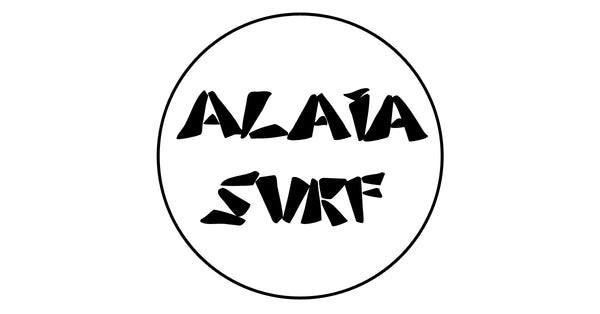Surfing is a game as old as the people of the Hawaii Islands. A community amusement enjoyed by men, women and children of all social classes who would share waves and play together in the water. The oldest known surfboard was found in a burial cave in Ho’okena on the Big Island of Hawaii. It dates back to the 1600s and it belonged to princess Kaneamuna.
With the arrival to the islands of Westerners and missionaries in the 1800s, the Hawaiian culture and traditions were undermined and the local community was discouraged from surfing. Since then, surfing has been especially challenging for women.
By the end of the XIX century, when surfing was almost lost after the missionary ban, a group of Waikiki waterboys and Princess Ka’iulani, encouraged its revival. Princess Ka’iulani, daughter of a Scottish merchant and sister of King Kalakua and Queen Lili’uokalani, was an accomplished surfer and swimmer, played the ukulele, danced hula, and legend has it that she even introduced surfing to Europe during her studies in England in the early 1890s.
Born and raised in Encinitas, California, Linda Benson started surfing when she was 11 years old. She learnt to surf at Moonlight Beach where she’d wait until her brother or one of his friends, would lose a board and then she paddled it back out to him.
In 1959, at the age of 15, Linda went on her first trip to Hawaii and became the youngest surfer ever to enter and win the International Championship at Makaha. A few days later, she became the first woman to paddle out Waimea Bay and charge into the bay’s 18-foot waves. “I don’t remember fear,” Benson declared years later. “I just wanted to do what the guys did. I didn’t think twice about it.” Linda Benson was at the vanguard of women surfing. She competed for 10 years in the ‘60s and became the first woman to be featured on the cover of as surf magazine in 1963.
In the 1960s and ’70s, the common image of a surfer was a white blonde surfer guy and at the same time the mainstream media was popularising this visualisation of surfing, a group of surfers like native Hawaiian Rell Sunn were building up the path to women’s professional surfing.
Rell began surfing at the age of four in Makaha, Oahu, one of the most popular surfing spots. She developed a strong relationship with the ocean and became the first female lifeguard in Hawaii. Her middle name, Kapolioka’ehukai, means “heart of the sea”. When Rell started competing there was no women’s category and she would surf against men. In 1975, she helped found the Women’s International Surfing Association (WISA) and a couple of years later, the Women’s Professional Surfing (WPS), establishing together with other pioneers, the first professional tour for women.
While women’s surfing competition was getting formalised, in the early 80’s surfing was still seen as a man’s sport. Lisa Andersen began surfing at the age of 13 in Ormond Beach, Florida. At the age of 16, Lisa run away from home to Huntington Beach, California following her passion for surfing leaving a note under her pillow: “(…) I’m leaving and I’m going to be the number one surfer in the world.”
During her journey to win a world title, Lisa became a mother first. Twelve days after giving birth, she was already competing at an event in Lacanau (France). Next year, Lisa won the first of her four consecutive world titles from 1994 to 1997 and she was the first female surfer to appear in the cover of SURFER magazine in 1996.
Lisa Andersen became an icon of the surf culture setting new standards to women’s surfing with her energetic style and performance, and knocking down gender preconceptions along the way. But not just that, she also played a large role in developing a market for women’s surf equipment. Lisa is definitely an inspiration to the current generation of professional female surfers.
In 2016, the Committee for Equity in Women’s Surfing (CEWS) was co-founded by professional surfers Paige Alms, Keala Kennelly, Andrea Moller, Bianca Valenti and SMC Harbor Commissioner Sabrina Brennan. CEWS provides resources for women surfers and demands equal respect for their work as athletes.
The first surf competition held at Mavericks took place in 1999 and the inaugural event was titled “Men Who Ride Mountains”. Two decades later, women surfers have never competed in the Mavericks event. In July 2018, CEWS met with the World Surf League (WSL) presenting a proposal requesting a women’s heat in the Mavericks Challenge and recommending equal prize money for men and women to achieve meaningful equity in competitive surfing. Two months later, in September 2018, the WSL announced equal prize money for every WSL controlled event in the 2019 season and beyond.
The courage and perseverance of many surfers in history questioning the norms, and demanding equal respect and value, is encouraging a new generation of female surfers to believe in themselves and show up as their full selves. And empowering the whole surf community to create an open and inclusive space for all individuals to play together in the water and share a few more waves.

